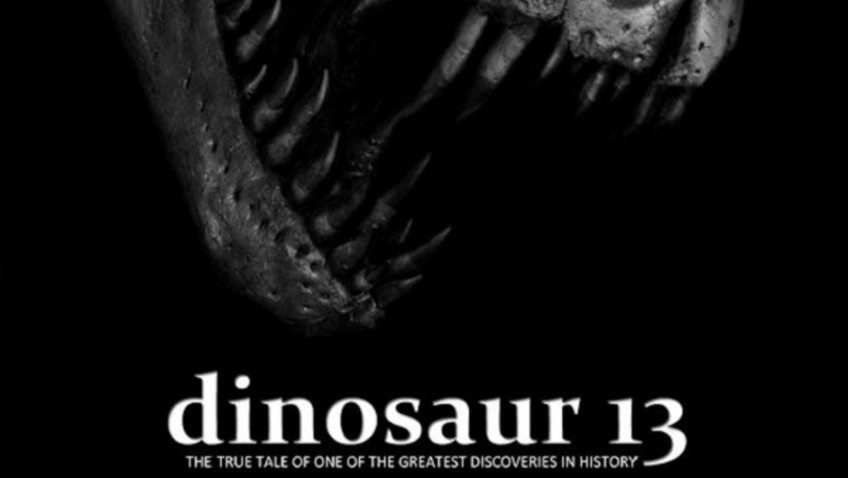The film of the week is Dinosaur 13, an unlikely sounding documentary that mature audiences might find a lot more thought-provoking and absorbing than even the best of the fictional dinosaur movies, such as Jurassic Park. Director Todd Douglass Miller takes us on an incredible and frightening journey, not back millions of years, but almost exactly 24, and to a dark place unimagined by visitors to natural history museums.
The Black Hills South Dakota are called the Bad Lands, but the modest Institute of Geological Research, staffed with bona fide palaeontologists, tax paying researchers and experienced fossil finders, is the last place on earth you’d expect to find a group of convicted felons. Nonetheless, palaeontologist Peter Larson and his team (brother Neal, Terry Wentz, Sue Hendrickson) found themselves in a ten-year court battle with none other than the US Government, after making the world’s greatest dinosaur discovery.
On a routine outing on August 12, 1990 Susan Hendrickson found what she instantly recognised as a large dinosaur fossil in the side of a hill and called for the team. On the second day of the excavation Larson paid farmer Maurice Williams $5,000 for the fossil, which was significantly more than the going rate for fossils found on farmers’ land.
Together, the colleagues unearthed what three-months of painstaking cataloguing revealed to be the most complete T Rex ever discovered. Prior to 1990, only two T Rex’s had been discovered and they were only around 40% complete. This fossil, named Sue after Henrickson, was 80% complete.
Larson planned for the 65-million-year-old treasure to be displayed in the town of Faith, where it would bring tourists to the depressed area. But the jubilation soon turned to anger and disbelief when the Institute was surrounded by a bevy of FBI agents, National Guard units and police – all looking for Sue.
When it became clear he could not retain his beloved fossil, Peter helped the law enforcement troops to pack her safely so that she would be preserved. This is what ultimately saved the century’s greatest dinosaur discovery because Sue was to remain in a storage vault in Rapid City for ten years while the team of scientists were hauled through the courts.
The complex issues, which the film explains well through a series of interesting talking heads, was the ownership of the land, rendered even more complicated as the dishonest farmer, Williams, was a member of the Cheyenne River Trust. The badlands are described by one interviewee as a patchwork quilt of regulations that had never been an issue before Williams realised the fossil’s value and wanted more money.
A ‘free Sue’ campaign began almost immediately with local residents joined by thousands of supporters around the world, but in vain.
The heavy-handed ‘seize and subpoena’ routine was the brainchild of overzealous District Attorney Kevin Schieffer and a hard nosed judge. Judge Batty claimed that Indians cannot sell land – and Sue was considered land, as it was a fossil – without the permission of the US Government, so its removal was theft. Schieffer seized the Institute records and managed to turn phone calls the institute made to various museums around the world into wire fraud; selling fossils to foreign collectors as money laundering; driving from South Dakota to Wyoming or Nebraska as the interstate transport of stolen goods.
According to an interview with one juror, the majority of the jury, would have been happy to let all of the defendants go free, whittled down the indictments significantly, but Peter received an usually heavy sentence of two years in prison. Williams received a tax free windfall at a Sotheby’s auction, but it would be a spoiler to tell you more.
Every cloud has a silver lining. An LA-based television producer and journalist, Kristin Donnan Standard, was sent to the Institute to interview Peter Larson and never left. The two married and Kristin documented the ordeal and campaigned, while providing Peter with much-needed support. The next time you take your grand-children to a natural history museum, spare a thought for Peter Larson and the long, often perverse arm of the US Law.
Joyce Glasser – MT film reviewer




